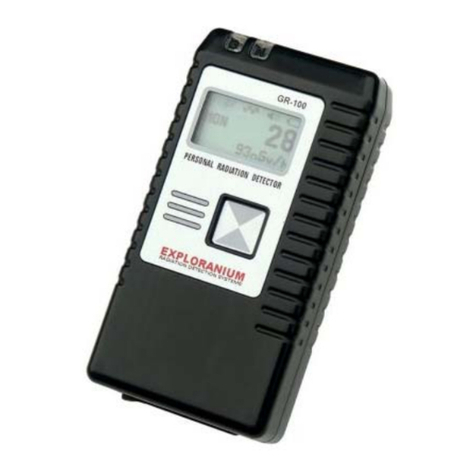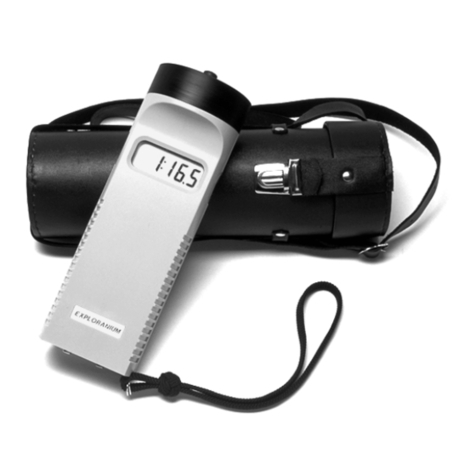
SAIC Exploranium – GR-135 System Manual page: 9
WARNING: Users are reminded not to place the GR-135 in the Docking Station, or connect
any battery charger to the unit while alkaline batteries are being used, as this will result in
battery leakage and extensive system damage.
While rechargeable batteries are shipped fully charged, they will self-discharge with time when not in
use. It is important to condition new batteries, whether received with the system or purchased
separately. Conditioning is achieved by first totally discharging the batteries in the GR-135 unit outside
the docking station and then fully charging them in the docking station for at least 12 hours.
NOTE: To get reliable performance and full capacity out of the batteries throughout their life, it is
important to let them fully discharge and then fully re-charge for 12 hours at least once every two
months. This will assure that the batteries provide 8 (12) hours of operation.
WARNING: Leaving the GR-135 in the docking station with the backlight activated over a long period of
inactivity may cause the batteries to be totally discharged. It is recommended to turn the backlight off if
the unit is not expected to be used within 4 hours. Alternately, it is advisable to lift the GR-135 from the
docking station and put it back at least once a day. This restores the charging cycle during the
prolonged period of inactivity.
h) BATTERY-CHARGER – in the GR-135 the battery charger is INTERNAL. This feature has been
added as this permits the battery charging system to be fully under software control. With the
increased availability of specialty batteries, this feature means that a wide variety of battery types
can be used in the instrument – the user simply selects battery type and the charger automatically
selects the correct charging parameters for this battery type.
i) DOCKING STATION (DS) – a Docking-Station is normally supplied with the GR-135. This
device is a cradle that the GR-135 unit sits in. The cradle is connected to the AC connection, has
an internal radioactive source (exempt quantity) and may be connected to a PC. 4 “fingers”
on the base of the GR-135 connect to mating 4 fingers on the Docking Station to provide
charging and data connections without opening the rear access data door.
The DOCKING STATION system comprises:
- the DS chassis - a special base that the GR-135 is seated in
- the system Test Source mechanically embedded in the DS
- an AC adaptor
- an RS-232 signal cable
Note that a stick on label (see fig) is on the DS
unit that specifies the fact that the internal test
source requires no licensing and no transport
restrictions apply. See the last page in this
manual for specific details of the applicable
documents to source possession and
transportation.
NON-DS OPERATION - Most users find that the Docking Station internal source makes it easier
to control sources, as small system test sources are easy to lose. For users who find the
Docking-Station operation unsuitable to their application – please advise Exploranium as a special
NON-DS KIT is available as an option that provides special cabling for charging/data I/O and a
test source to permit NON DS operation (see Appendix C)
This unit includes a very low activity radioactive
source. This source has NO license limitations
and NO shipping limitations apply as it is
considered an EXCEPTED PACKAGE as specified in
US NRC 49CFR 173.424 for radioactive material,
excepted package-instruments or articles,
UN2910.





























